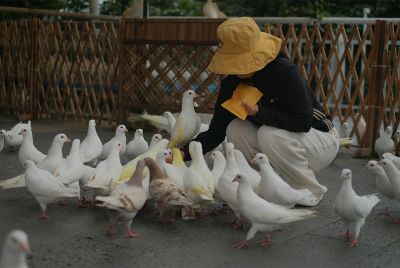Bird flu: Mutating, deadly strain spreading fast could turn into a pandemic warn researchers

A deadly strain of bird flu that can infect humans has spread to different parts of China, is fast mutating and could end up as a pandemic, warn researchers after conducting the largest-ever genomic survey of the virus in poultry.
Now endemic in most regions of China, the H7N9 strain of avian virus is swapping genes with other types of flu viruses, giving rise to new strains.
Any of the new strains could start a pandemic, they say.
The virus is entrenched in poultry populations across swathes of China, making it likely that people will continue to be infected sporadically.
The researchers warn that it seems only a matter of time before poultry movement spreads this virus beyond China by cross-border trade, as happened previously with H5N1 and H9N2 influenza viruses.
Taking swabs from birds at live poultry markets in 15 cities in five different eastern Chinese provinces, the researchers have evidence that the H7N9 virus is moving across China and gaining genetic diversity in the process.
The virus was detected in markets in seven cities and in 3% of samples on average.
The team then sequenced the genomes of 438 viral isolates and found that as the virus spread south, it evolved into three main branches, with multiple sub-branches. They have found at least 48 different sub-types.
"The extent of viral transmission among chickens was largely unclear until our paper showed that the virus had diverged into regional lineages," says Yi Guan, a co-author of the paper and a virologist at the State Key Laboratory of Emerging Infectious Diseases in Shenzhen, China.
Genetic changes
As flu viruses evolve and diversify in birds, genetic changes can alter their infectivity, virulence or ability to spread among humans, notes Guan. Human infections also provide viruses with opportunities to better adapt to their hosts.
The H7N9 has seen mutations that allow the virus to spread from birds to humans more easily than avian H5N1 flu, which has infected 784 people in 16 countries and killed 429 of them since it appeared in 2003.
While Guan's team reported no further significant mutations in H7N9, the threat from H7N9 is unlikely to go away any time soon.
The H7N9 strain of avian influenza first reared its head in humans in early 2013 in eastern China, prompting a shutdown of live bird markets. It then re-emerged in winter the same year in a second wave that led to 318 human cases and over a hundred deaths.
Confirming the seasonal pattern, there was a lull in the summer of 2014, but infections rose in winter in a third wave that is still going on.
As chickens exhibit no outward signs of being infected by the H7N9 virus, it is difficult to monitor and control poultry populations in large nationalised farms.
While humans can pick the infections from birds, the real danger comes with the virus accomplishing human-to-human transmission.
The H7 influenza subtype is one of a few influenza subtypes -- there are around 18 discovered so far in all -- that are known to infect mammals, making it a likely candidate for human-to-human transmission, but there is no evidence yet this has occurred.
The reinventing of influenza viruses by constantly recombining in various genetic exchanges of eight RNA segments has raised alarm with the World Health Organization warning recently of possible pandemics worse than the swine flu outbreak of 2009.
The health agency is particularly concerned about avian influenza, noting that the diversity and geographical distribution of influenza viruses currently circulating in wild and domestic birds are unprecedented.
Over the past two years, H5N1 has been joined by newly detected H5N2, H5N3, H5N6 and H5N8 strains, all of which are currently circulating in different parts of the world.
The H5N2 strain recently seen in poultry in Canada was different from H5N1 found in Asia with a mix of genes from the Eurasian strain H5N8 introduced in 2014 along with the North American influenza virus.
© Copyright IBTimes 2025. All rights reserved.





















